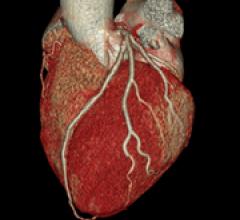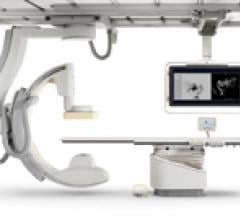If you enjoy this content, please share it with a colleague
Philips
RELATED CONTENT
Digital mammography (DM) is a field in which advances are constantly being made and new trends evolve. During a scientific session at RSNA 2011, John M. Lewin, M.D., discussed recent trends and how they have changed during the past year.
Breast cancer screening is a well-established method for reducing mortality in women, because cancers can be detected at an early stage while they are still easy to treat. However, low radiation dose to the breast is important when screening, since healthy women are exposed. Numerous studies comparing full-field digital mammography (FFDM) with screen-film mammography (SFM) and computed radiography (CR) plates have been performed and show the clinical advantage and dose reduction capabilities of FFDM systems.
The next big advancement in cardiac imaging is likely to be computed tomography (CT) perfusion imaging. This enables one commonly available modality to image both the detailed anatomy and function of the heart at the same time. The impact on medicine could reduce healthcare costs by eliminating some hospital stays, cutting the number of tests and speeding patient diagnosis.
December 28, 2011 — Royal Philips Electronics introduced IntelliSpace PACS 4.4, the newest release in the evolution of the company’s iSite picture archiving and communications system (PACS). The system leverages the latest advances in IT technology and allows for smarter collaboration with the goal of better patient outcomes. It is on display at the 97th annual meeting of the Radiological Society of North America (RSNA), Nov. 27 – Dec. 2.
December 28, 2011 — Royal Philips Electronics recently introduced the Philips Veradius Neo mobile C-arm with flat detector. The device allows surgeons to more easily and precisely handle challenging patients and procedures.
December 13, 2011 — Royal Philips Electronics announced that iDose, the latest generation of its iterative reconstruction technique, has nearly 500 sales.
After spending a week walking the show floor and meeting with scores of vendors at the Radiological Society of North America (RSNA) 2011 annual meeting, the following are my choices for the most innovative new technologies presented.
Philips Healthcare announced 510(k) clearance from the U.S. Food and Drug Administration (FDA) for the company’s first commercially available whole body positron emission tomography/magnetic resonance (PET/MR) imaging system, the Ingenuity TF PET/MR. This platform will redefine how medicine is practiced in the future by helping clinicians and researchers investigate novel personalized medicine and treatments for oncology, cardiology and neurology.
Once an emerging technology confined to early adopters, server-based advanced visualization has gradually become a more popular solution in the medical imaging informatics marketplace in the last few years. This has carried on to the point that it can today be deemed the de facto standard for advanced visualization in medical imaging enterprises.
Over the last 10 years, hospitals have phased out analog image intensifiers for flat-panel, digital detector angiography systems in their cath labs. As hospitals look to purchase current-generation digital angiography systems, buyers should be aware of several new technologies.


 January 31, 2012
January 31, 2012 








